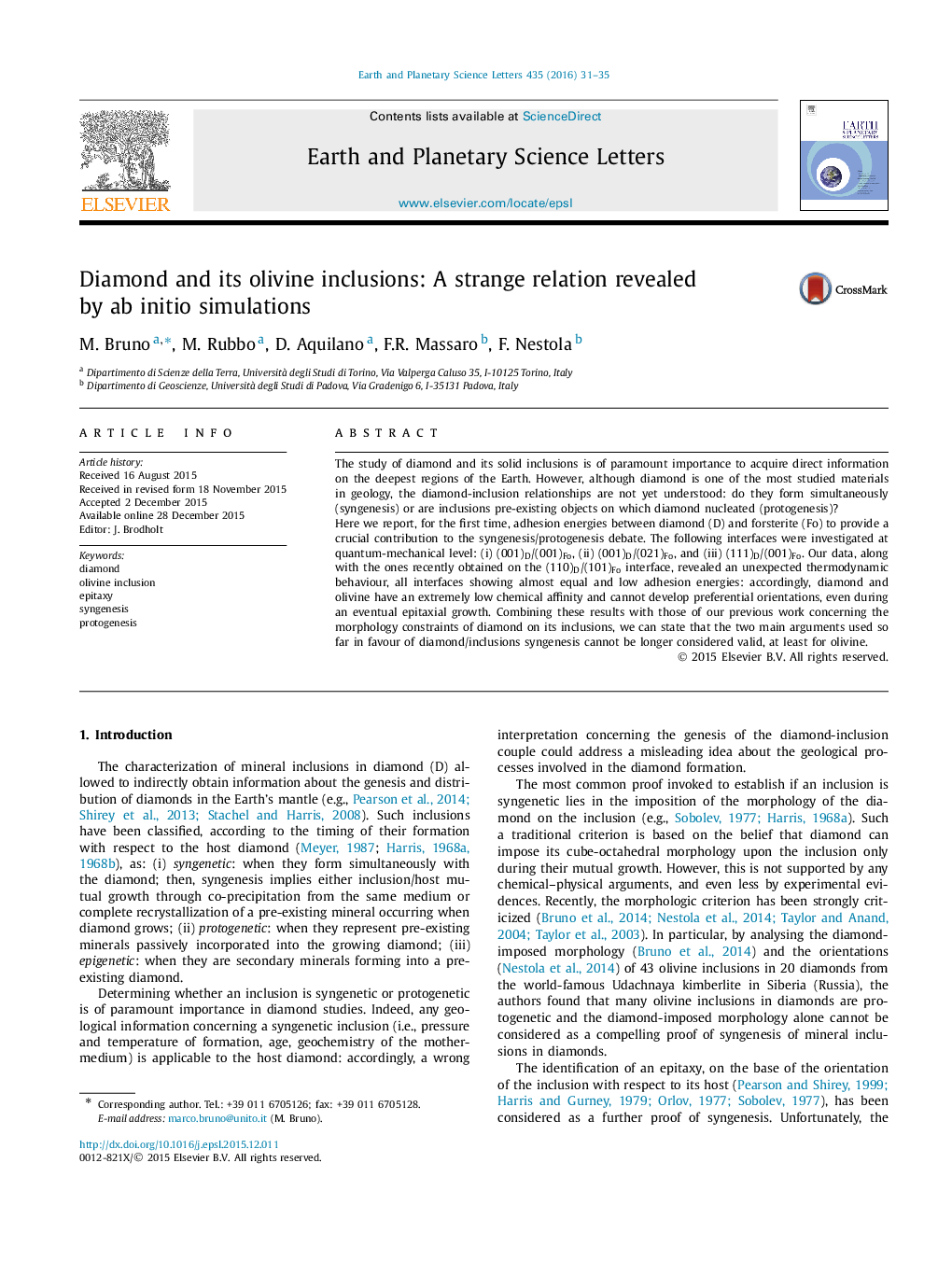| کد مقاله | کد نشریه | سال انتشار | مقاله انگلیسی | نسخه تمام متن |
|---|---|---|---|---|
| 6427633 | 1634721 | 2016 | 5 صفحه PDF | دانلود رایگان |
- Syngenesis/protogenesis between diamond and its inclusions.
- Determination of adhesion energy by ab-initio calculations.
- Diamond and olivine inclusions.
The study of diamond and its solid inclusions is of paramount importance to acquire direct information on the deepest regions of the Earth. However, although diamond is one of the most studied materials in geology, the diamond-inclusion relationships are not yet understood: do they form simultaneously (syngenesis) or are inclusions pre-existing objects on which diamond nucleated (protogenesis)?Here we report, for the first time, adhesion energies between diamond (D) and forsterite (Fo) to provide a crucial contribution to the syngenesis/protogenesis debate. The following interfaces were investigated at quantum-mechanical level: (i) (001)D/(001)Fo, (ii) (001)D/(021)Fo, and (iii) (111)D/(001)Fo. Our data, along with the ones recently obtained on the (110)D/(101)Fo interface, revealed an unexpected thermodynamic behaviour, all interfaces showing almost equal and low adhesion energies: accordingly, diamond and olivine have an extremely low chemical affinity and cannot develop preferential orientations, even during an eventual epitaxial growth. Combining these results with those of our previous work concerning the morphology constraints of diamond on its inclusions, we can state that the two main arguments used so far in favour of diamond/inclusions syngenesis cannot be longer considered valid, at least for olivine.
143
Journal: Earth and Planetary Science Letters - Volume 435, 1 February 2016, Pages 31-35
